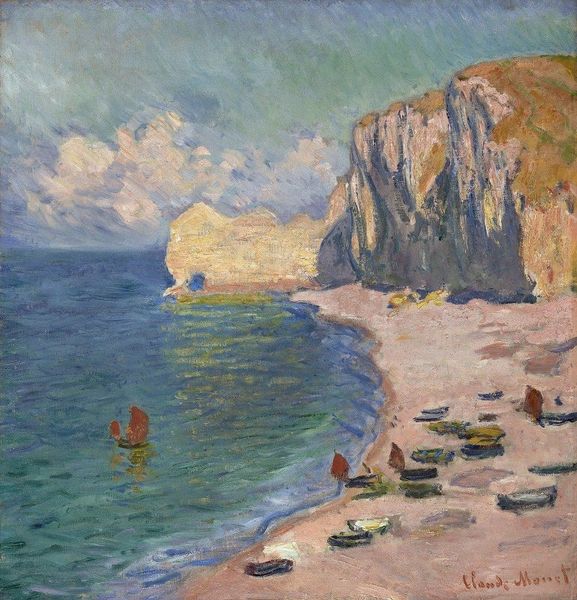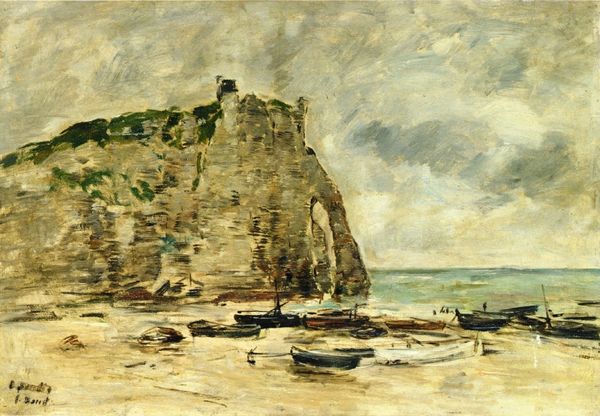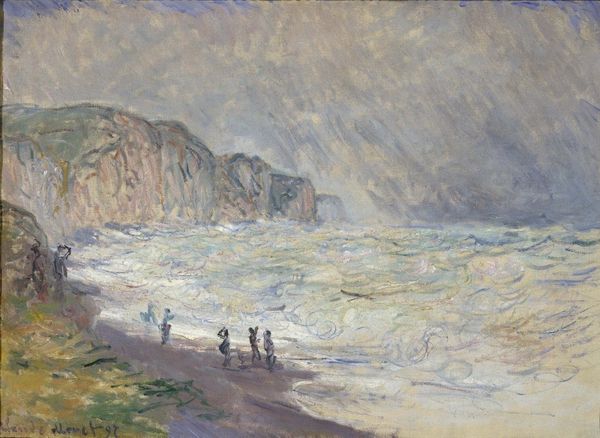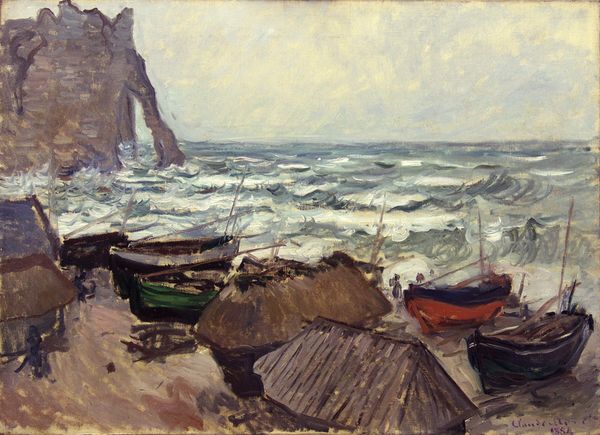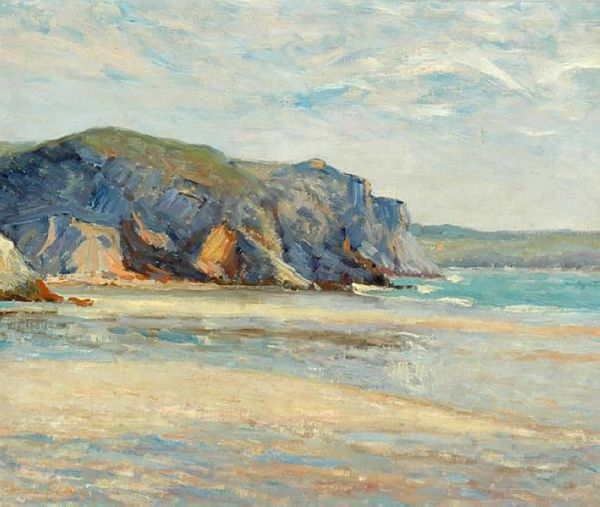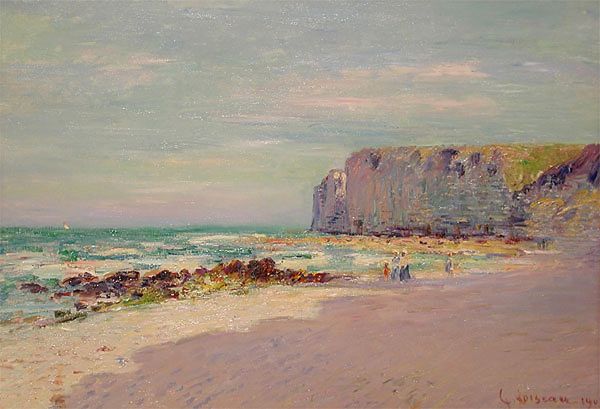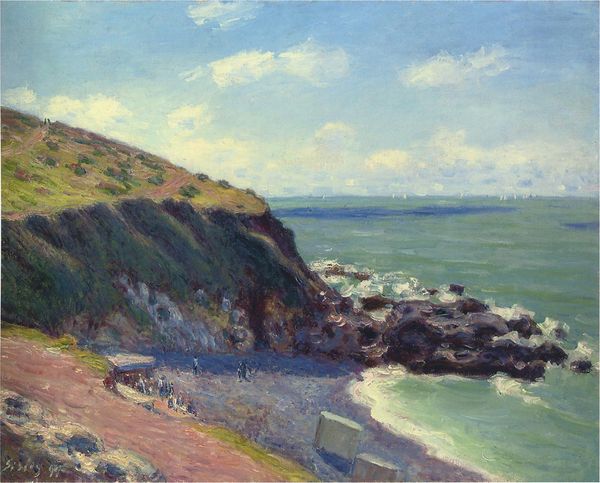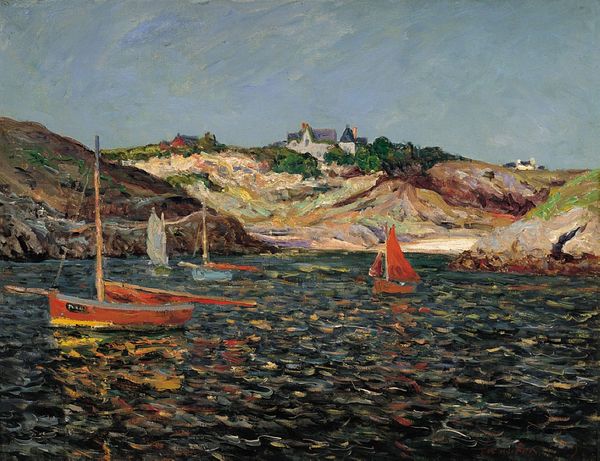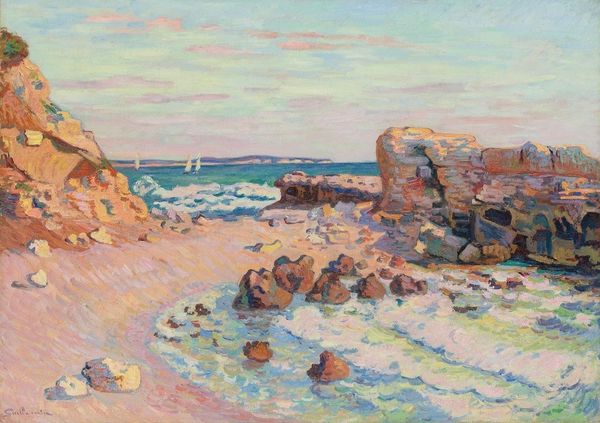
painting, plein-air, oil-paint
#
boat
#
cliff
#
ship
#
painting
#
impressionism
#
impressionist painting style
#
plein-air
#
oil-paint
#
landscape
#
impressionist landscape
#
oil painting
#
sea
Copyright: Public domain
Curator: Monet's "The Beach at Etretat," painted in 1883, presents a scene of vibrant activity nestled against the dramatic cliffs of the Normandy coast. Oil paint brings a hazy, dreamlike quality to the setting. Editor: It's such a dynamic composition. I'm immediately struck by the contrast between the weighty, looming cliffs and the bustling energy of the beach below. The boats are practically leaping off the sand. Curator: Precisely. Monet was fascinated by the changing qualities of light and atmosphere. Considering his project through the lens of feminism, how do we contextualize his almost obsessive return to specific places and fleeting moments in time? Editor: That's a potent angle. The ephemeral nature of the scene can be connected to broader societal structures, thinking of how leisure activities and perceptions of landscape were impacted by, say, class and gender. Those little figures dotting the beach seem almost deliberately anonymized, don't they? Part of a scene that seems, on the surface, to glorify nature’s grandeur, but can also speak to a deeply codified social order. Curator: Agreed. Etretat became a fashionable resort in the 19th century, so paintings of it offered a certain social capital for both artist and patron. His works became a visual language for modern leisure, speaking of mobility and wealth during a time of growing disparity in France. We can view those boats not simply as objects, but signifiers within this socio-economic landscape. Editor: It speaks to how even a seemingly pure landscape is politically charged, imbued with class implications. Monet isn’t just painting the scene, he’s implicitly framing a relationship between people and place in an era of industrialization and its shifting societal codes. It encourages a deeper reflection on representation and what is not visible on the canvas. Curator: I think unpacking that visual shorthand—considering how these locations, activities, and compositions operated in 19th-century French society—adds essential depth to our experience. Editor: Absolutely, approaching these artworks requires a consistent questioning of what is presented and, vitally, what sociopolitical factors shaped their emergence. It moves beyond surface appreciation toward something truly meaningful.
Comments
No comments
Be the first to comment and join the conversation on the ultimate creative platform.
